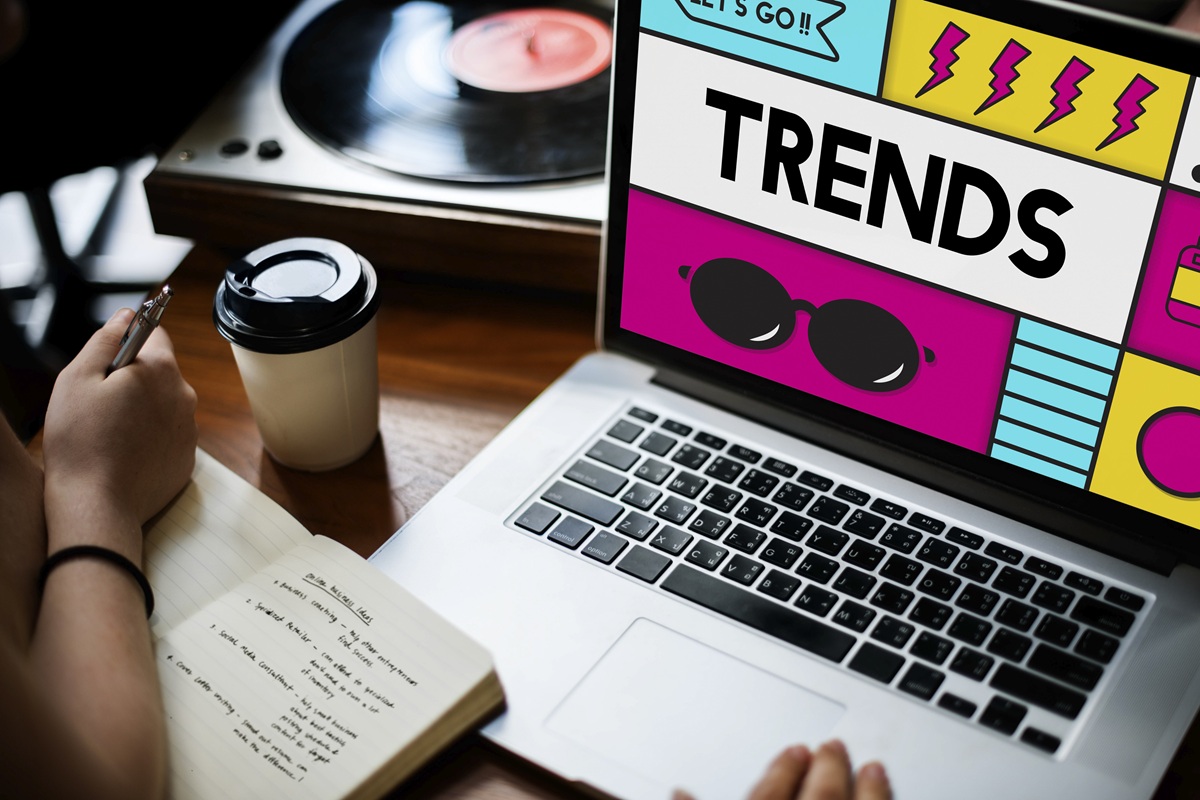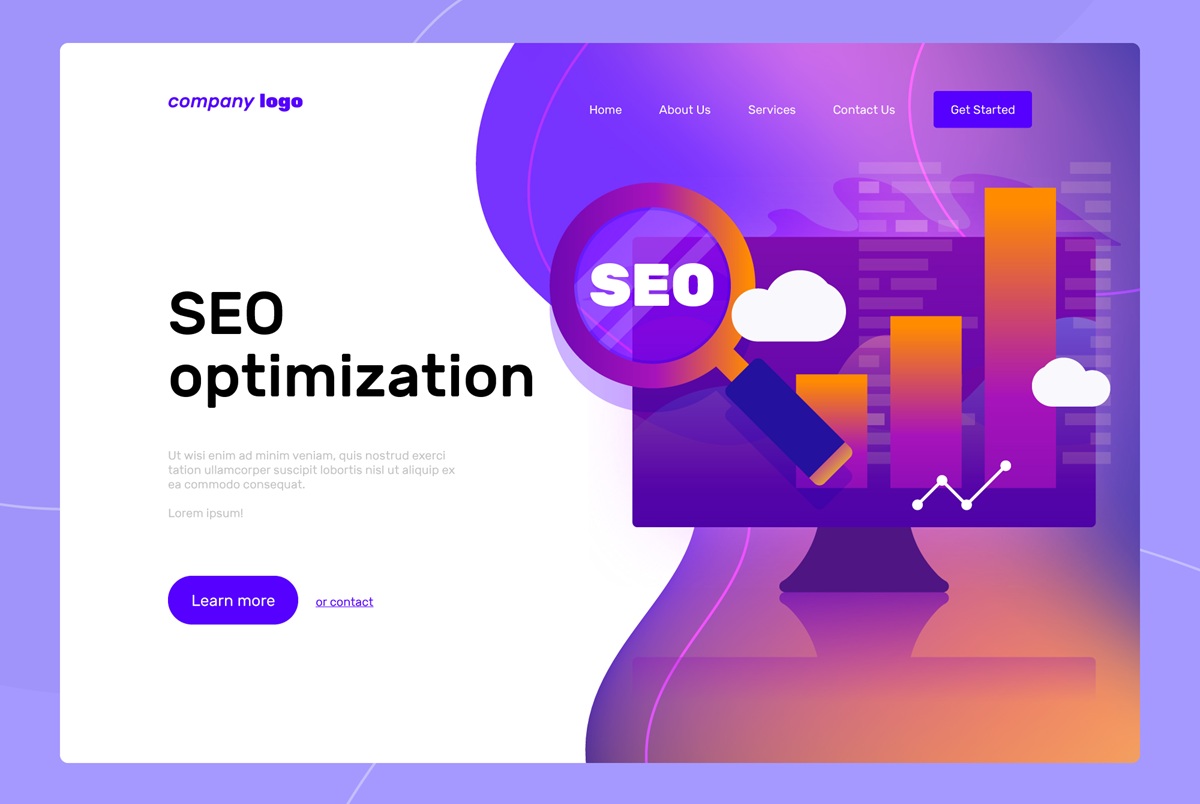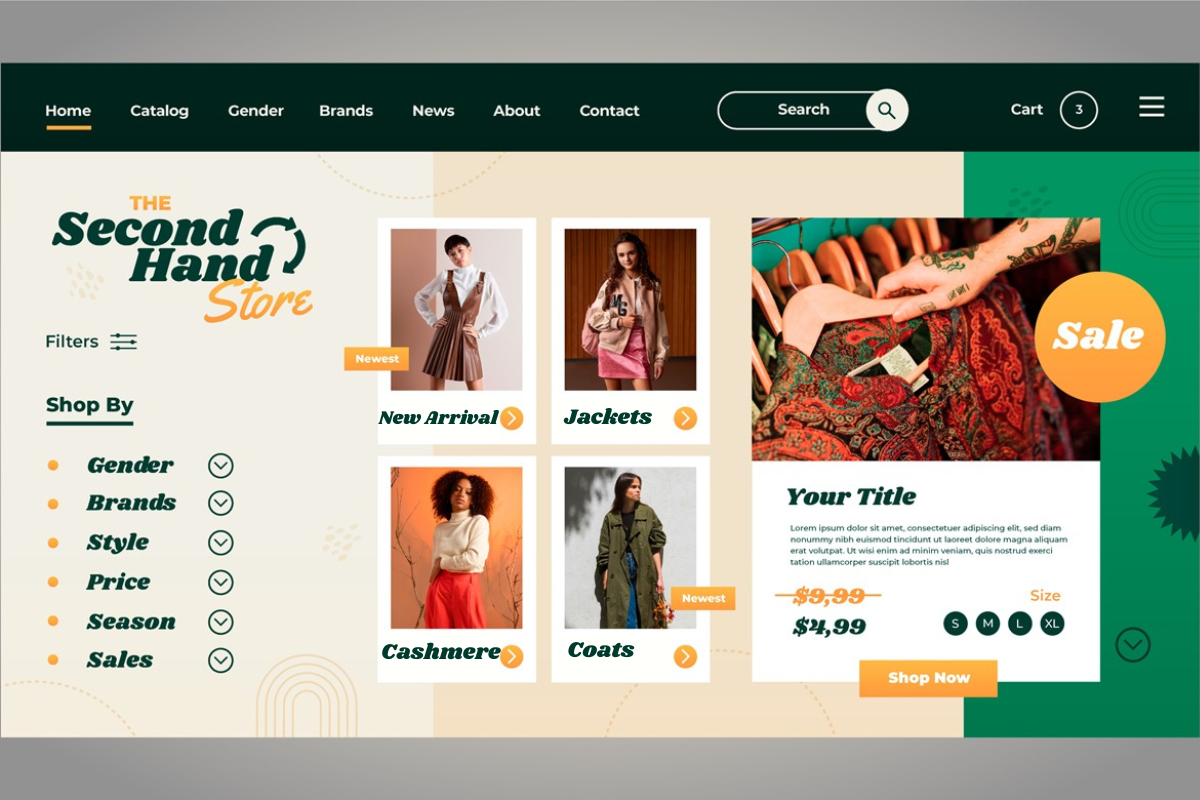Blog
Why Fashion Brands Are Getting SEO Completely Wrong (And Losing Sales Because of It)

Share
If you talk to marketing directors at fashion eCommerce businesses, almost everyone will tell you the same thing: "SEO doesn't work for fashion brands like it does for other industries."
Why?
Because most fashion marketers believe their success depends on staying ahead of trends, building Instagram followings, and creating viral content about the "latest styles." They think SEO is too slow for an industry that changes every season.
But here is the big fallacy fashion brands fall prey to: They assume that because fashion is visual and trend-driven, search engine optimization doesn't matter. This results in millions of dollars in lost revenue while they chase vanity metrics on social platforms.
The truth is, fashion eCommerce brands that master SEO completely dominate their competition. While everyone else is fighting for attention on Instagram, smart fashion retailers are capturing high-intent shoppers the moment they decide to buy.
In this article, we'll expose the three biggest SEO mistakes fashion brands make, then show you the data-driven approach that drives sales in the competitive fashion industry.
The Fatal Fashion SEO Mistake: Chasing Trends Instead of Buyers

Here's what we see fashion eCommerce brands doing wrong every single day:
The Standard Fashion Marketing Playbook:
- Launch a fashion blog to drive traffic with "Top 10 Spring Trends" content
- Focus marketing budget on influencer partnerships and social media
- Optimize only for broad category terms like "women's dresses" or "men's shoes" to avoid competing with established fashion magazines for visibility.
- Create seasonal content that becomes irrelevant after 3 months
- Treat SEO as an afterthought while pouring resources into paid social
This approach sounds logical. Fashion is visual, social, and trend-driven, right?
But here's what really happens: You end up competing with Vogue, Harper's Bazaar, and hundreds of fashion magazines for informational keywords that your target customers aren't even searching for when they want to buy clothes, which undermines your SEO for fashion brands.
Meanwhile, someone searching for "black midi dress for work" or "waterproof running shoes women" is ready to purchase right now. These shoppers have moved past the inspiration phase and are actively looking for specific products to solve their needs.
Yet most fashion brands completely ignore these high-intent, product-specific searches because they're not "trendy" enough.
Why Fashion Brands Win Big with SEO
Let me venture outside of fashion for a hot minute to show you why this industry is actually perfect for SEO.
Unlike SaaS companies that sell one product, fashion eCommerce sites naturally have hundreds or thousands of unique products. Each product represents a potential search opportunity.
Consider the numbers: A typical fashion brand might have:
- 500+ individual products
- 20+ categories (dresses, tops, bottoms, shoes, accessories)
- With 50+ subcategories (midi dresses, maxi dresses, cocktail dresses), optimizing product descriptions for specific keywords can enhance your fashion brand's SEO.
- Dozens of attributes (color, size, material, occasion, season)
- Multiple brand partnerships and designer collections
This creates thousands of potential long-tail keyword opportunities that your competitors aren't targeting because they're too busy chasing "fashion trends" with zero commercial intent.
Here's a real example from our client data:
A mid-size women's fashion retailer was spending $15,000/month on influencer partnerships and getting maybe 2-3% conversion rates from social traffic. Their "Top Summer Fashion Trends" blog posts were getting decent traffic but virtually no sales, indicating a need for better product descriptions and SEO strategies.
We shifted their strategy to focus on product-specific SEO. Instead of targeting "summer fashion trends," we optimized for terms like:
- "Floral midi dress wedding guest" is an excellent example of a long-tail keyword that can boost your fashion website's SEO performance.
- "work appropriate sleeveless blouses"
- "comfortable walking sandals women"
- "black blazer petite sizes"
The results after 6 months:
- 340% increase in organic revenue
- 67% of their total eCommerce sales now come from organic search
- Average order value from SEO traffic is 2.3x higher than social media traffic
- They cut their paid social budget in half while growing overall revenue
Why did this work? Because we stopped trying to compete with fashion magazines for informational content and started capturing shoppers who were actually ready to buy.
The Fashion SEO Framework That Delivers
Based on our work with dozens of fashion eCommerce brands, here's the framework that consistently drives revenue growth:
1. Product-First Keyword Strategy
What most fashion brands do: Target broad, competitive terms like "women's dresses" or "men's sneakers"
What actually works: Build keyword clusters around specific product attributes and use cases.
Instead of competing for "dresses" (search volume: 1M+, impossible to rank), target clusters like:
- "midi dress work appropriate" (2,400 searches/month)
- "black dress wedding guest" (1,900 searches/month)
- "floral dress summer casual" (1,200 searches/month)
- "Wrap dress plus size" (800 searches/month) is a valuable keyword for improving organic traffic in the fashion eCommerce sector.
These long-tail keywords have three massive advantages:
- Higher conversion rates - Someone searching "midi dress work appropriate" knows exactly what they want
- Less competition - Fashion magazines don't create content for these specific buying intents
- Scalable volume - You can rank for hundreds of these terms across your product catalog
Pro tip: Use your customer service emails and return reasons to identify how real customers describe your products. These descriptions often become your highest-converting keywords.
2. Collection Page Optimization (Not Blog Content)
This is where most fashion brands get it completely backwards.
The conventional approach: Create blog content about trends and hope it drives traffic to product pages
The reality: Blog traffic converts at less than 1% for fashion eCommerce. Collection pages convert at 15-25%.
Instead of writing "10 Must-Have Fall Fashion Trends," create optimized collection pages for specific shopping intents:
- "Work Dresses for Professional Women" - featuring your business-appropriate dresses
- "Wedding Guest Outfits Under $200" - curated collection with clear pricing
- "Comfortable Walking Shoes for Travel" - focused on specific use case
- "Date Night Outfits Casual Chic" - targeting a specific occasion
Each collection page should include:
- Unique, optimized product descriptions (not manufacturer copy) are essential for enhancing SEO performance and attracting organic traffic.
- Clear value propositions and styling suggestions
- FAQ sections answering common customer questions
- High-quality product images with descriptive alt text
- Customer reviews and social proof
Each product page is a potential revenue driver when optimized correctly. For detailed strategies on creating product pages that convert search traffic into sales, check out our comprehensive guide on SEO for eCommerce product pages, covering everything from unique descriptions to technical schema implementation.
Why this works: You're creating pages that match exactly what shoppers are searching for, then making it easy for them to browse and buy relevant products.
3. Technical Foundation That Fashion Sites Always Miss
Here's the thing about fashion eCommerce sites - they're often beautiful but terrible for SEO. Most fashion brands prioritize visual appeal over search engine optimization, which is like having a stunning storefront that no one can find.
Critical technical fixes for fashion sites:
Page Speed: Fashion sites are notorious for being slow because of large image files and complex design elements, which negatively impacts their SEO performance and user experience. But here's the data that should scare you: a 1-second delay in page load time reduces conversion rates by 7%. For a fashion brand doing $1M annually, that's $70,000 in lost revenue.
Image Optimization: Your product images need descriptive filenames and alt text. Instead of "IMG_1234.jpg," use "black-midi-dress-work-professional-women.jpg" to enhance the visibility of your fashion website through better keyword research. This helps both SEO and accessibility.
If your current platform is making it difficult to implement these technical optimizations, it might be time to evaluate your options. Our analysis of the best eCommerce platform for SEO can help you understand which platforms give fashion brands the most flexibility for search optimization without sacrificing design capabilities.
Product Schema Markup: Most fashion brands skip this completely. Proper product schema gives you rich results in search - showing price, availability, and reviews directly in search results. This can increase click-through rates by 30-40%.
Mobile Experience: 70% of fashion purchases happen on mobile devices. Your product pages need to load quickly and make it effortless to browse colors, sizes, and related items on small screens.
Site Architecture: Organize your navigation around how customers actually shop, not how your inventory management system works. Create clear paths from category pages to subcategories to individual products.
Common Objection: "But Fashion Moves Too Fast for SEO"

We hear this constantly: "SEO takes too long, and fashion trends change every few months."
Here's our response: You're thinking about SEO wrong.
Yes, if you're trying to rank for "fall 2024 fashion trends," that content becomes worthless in a few months. But if you rank for "black boots women ankle height," that search intent exists year-round.
The key is distinguishing between trending keywords and evergreen buying intent:
Trending (avoid): "2024 fashion trends," "spring colors," "what's in style" Evergreen (target): "work appropriate blouses," "comfortable heels," "black dress versatile"
Smart fashion brands build their SEO foundation on evergreen buying intent, then layer seasonal promotions on top through paid ads and email marketing.
The ROI Reality: Why Fashion Brands Can't Afford to Ignore SEO
Let's be completely honest about the numbers.
Average fashion brand marketing spend breakdown:
- Paid social media: 40-50% of budget
- Influencer partnerships: 20-30%
- Email marketing can boost your SEO performance by driving organic traffic, with an expected return of 10-15%.
- SEO: Less than 10%
But here's the actual revenue contribution we see from clients:
- Organic search: 35-45% of total revenue
- Paid social: 15-20%
- Email: 20-25%
- Direct traffic: 15-20%
Most fashion brands are massively under-investing in their highest-ROI channel while pouring money into expensive, low-converting social media campaigns.
The compound effect of implementing SEO strategies can significantly enhance your fashion website's visibility and sales. Unlike paid advertising, SEO builds equity over time. That "comfortable work shoes women" page you create today can drive sales for years, significantly enhancing your fashion website's visibility in the long run. Meanwhile, your Instagram ad stops generating revenue the moment you stop paying for it.
Your 90-Day Fashion SEO Action Plan

Ready to stop chasing vanity metrics and start driving actual sales? Here's exactly what to do:
Days 1-30: Foundation and Research
- Audit your current keyword targeting - Are you going after informational "fashion trend" terms or commercial "product + intent" terms?
- Analyze your best-selling products - What specific attributes and use cases do customers mention in reviews?
- Research competitor gaps in keyword strategies to identify opportunities for improving your fashion eCommerce site's organic traffic. - What product-specific terms are your competitors missing?
- Fix critical technical issues - Page speed, mobile experience, basic schema markup
To ensure you're covering all the critical elements during your foundation phase, use our comprehensive eCommerce SEO checklist to identify any gaps in your current optimization strategy and prioritize fixes that will drive the most revenue impact.
Days 31-60: Content Creation
- Create 5-10 optimized collection pages targeting specific buying intents
- Optimize your top-selling product pages with unique descriptions and relevant keywords
- Add FAQ sections To address common customer questions and capture long-tail searches, effective SEO strategies for fashion eCommerce should be implemented.
- Implement product schema markup to get rich results in search
Days 61-90: Scale and Optimize
- Analyze which pages are driving the most revenue (not just traffic)
- Expand successful keyword themes into additional collection pages
- Start building links to your best-performing commercial content
- Set up tracking to analyze the effectiveness of your SEO strategies for fashion brands and adjust as needed. to measure organic revenue, not just rankings
The Fashion SEO Reality Check
Here's what separates fashion brands that succeed with SEO from those that fail:
Successful fashion brands treat search engine optimization like customer service. They identify what their customers are actually searching for when they want to buy clothes, then create pages that perfectly match that intent.
Failing fashion brands treat SEO like content marketing. They create blog posts about trends and hope somehow that drives sales.
The fashion industry is incredibly competitive, but that competition is mostly happening on social media and paid advertising. Organic search remains massively underutilized, which means there's still enormous opportunity for brands willing to do the work.
The bottom line: While your competitors are spending $50,000/month chasing Instagram engagement, you can be capturing high-intent shoppers who are actively looking to buy clothes right now.
Fashion eCommerce SEO isn't about following the latest trends. It's about understanding that someone searching "black blazer petite professional" is telling you exactly what they want to buy - and making sure they find your product first.
Want to see how this framework would work for your fashion brand? We've helped dozens of fashion retailers increase their organic revenue by 200-400% using this exact approach. The brands seeing the biggest results are the ones that stop treating SEO like content marketing and start treating it like customer acquisition.
Details
Topic:
Publication:
20.10.2025

.svg)

.webp)





.png)







.png)